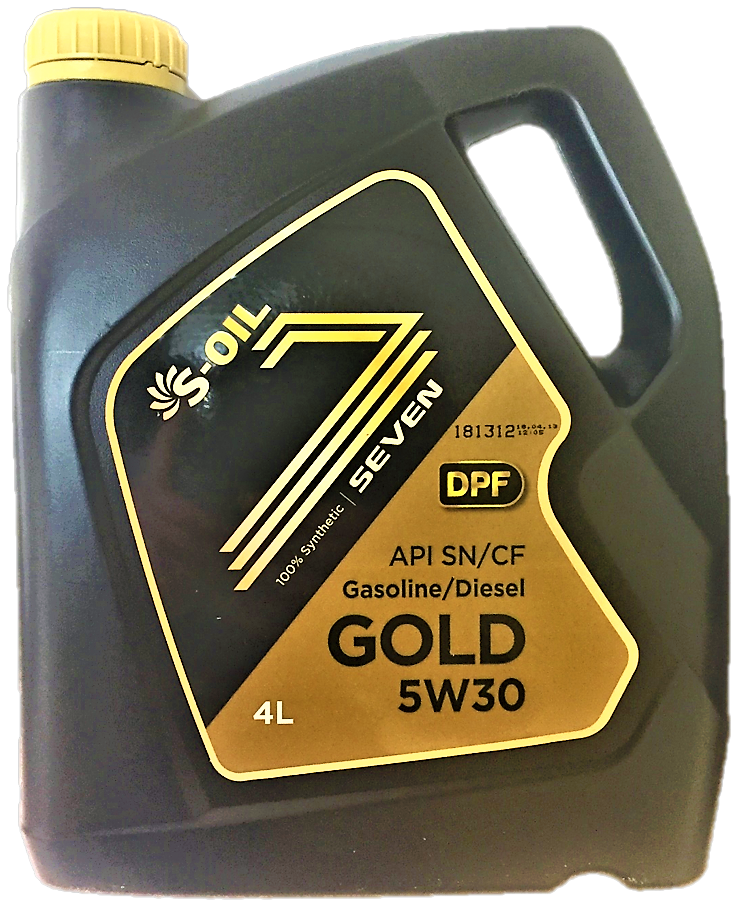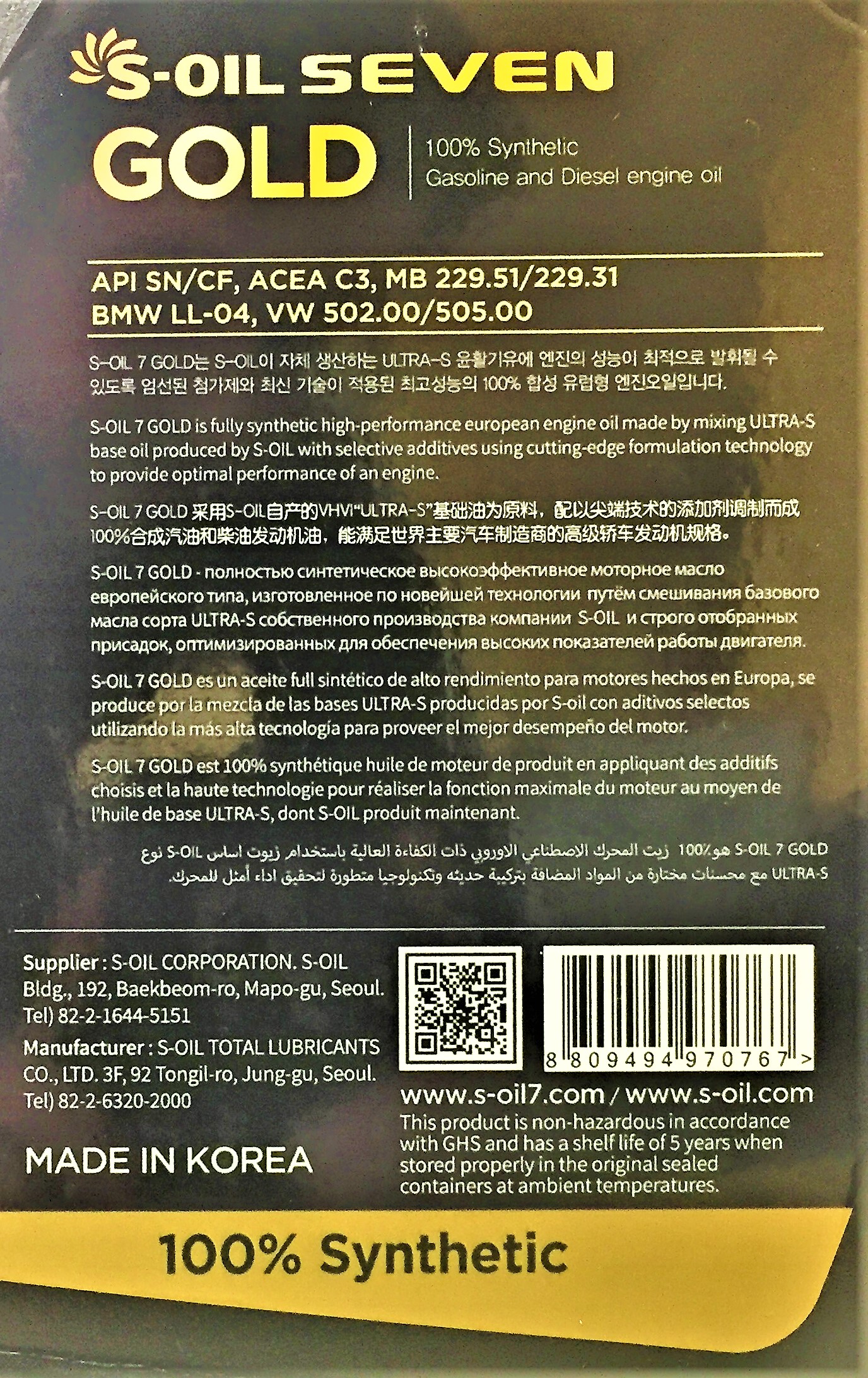Product Tested

Click above for larger image

Click above for larger image
S-OIL Corporation
Company and Product Information
Corporate Office:
S-OIL Corporation
Bldg. 192, Baekbeom-ro, Mapo-gu, Seoul 04196, Korea
Website(s): www.s-oil.com
www.s-oil7.com
S-Oil Total Lubricants Co., Ltd. produces and sells lubricant oils. It offers automotive oils, such as gasoline, passenger diesel, diesel, LPG, motor oils, and agricultural gear oils; and industrial oils, including hydraulic fluids, machine oils, industrial gear oils, sliding surface oils, turbine oils, compressor oils, drill oils, ship oils, and guitar oils. The company was founded in 2008 and is headquartered in Seoul, South Korea. S-Oil Total Lubricants Co., Ltd. is a joint venture of S-Oil Corporation and TOTAL S.A.
Source: Bloomberg
S-OIL Seven Gold 100% Synthetic
5W30
Gasoline and Diesel Engine Oil
Product: S-OIL Seven Gold 100% Synthetic
Viscosity Grade: "5W30"
Labeled: API SN/CF, ACEA C3, MB 229.51/229.31, BMW LL-04, VW 502.00/505.00
Supplier: S-OIL Corporation, Seoul, Korea
Manufacturer: S-OIL TOTAL LUBRICANTS CO., LTD., Seoul, Korea
Purchased at: Lexington, KY
Date of purchase: 12/3/2018
Website(s): www.s-oil.com and www.s-oil7.com
Test Results and Assessment:
The results of the tests conducted on this sample meet the SAE J300 specifications for the SAE Viscosity Grade listed on the product label, and are consistent with the listed API Service Categories.
Note: Although the results of the tests conducted on this sample meet the SAE J300 specifications for an SAE 5W-30, the viscosity declaration on the front label of this product does not conform to the SAE J300 labeling requirements and those set forth in NIST Handbook 130 which state that the viscosity grade is preceded by “SAE” and that the two grades for a multigrade are separated by a hyphen.
 |
Physical Properties |  |
||||||||
| Elemental Analysis |  |
|||||||||
| Labeling |  |
|||||||||
|
||||||||||
Note1: Although laboratory tests alone cannot be used to establish if engine oil meets an API Service Category, they can be used to determine if it doesn't. Note2: The specification for cold cranking viscosity includes only a maximum value; the minimum value shown in the “standard” area of the chart is truncated for illustrative purposes.
| PHYSICAL TESTS (click for test details) - a | Standard | S-OIL |
| TBN, mg KOH/g (ASTM D2896) | 7.37 | |
| Viscosity @ 100ºC, cSt (ASTM D445) | 9.3 to <12.5 | 12.29 |
| Viscosity @40ºC, cSt (ASTM D445) | 71.70 | |
| Viscosity Index (ASTM D2270) | 170 | |
| Viscosity @-30ºC mPa s (cP) (ASTM D5293) | 6,600 Max | 5,544 |
| Volatility, mass % loss, 1 hr, @ 250ºC (ASTM D5800) | 15 Max -c | 9.6 |
| ELEMENTAL ANALYSIS (click for test details) - a, b | ||
| Additives | ||
| Calcium, ppm | 1,938 | |
| Magnesium, ppm | 11 | |
| Phosphorus, ppm | 600 to 800 -d | 800 |
| Zinc, ppm | 920 | |
| Molybdenum, ppm | 10 | |
| Barium, ppm | <1 | |
| Boron, ppm | 77 | |
| Silicon, ppm | 8 | |
| Potassium, ppm | <5 | |
| Manganese, ppm | <1 | |
| Titanium, ppm | <1 | |
| Copper, ppm | <1 | |
| Sodium, ppm | <5 | |
| Vanadium, ppm | <1 | |
| Contaminants | ||
| Silver, ppm | <1 | |
| Aluminum, ppm | <1 | |
| Chromium, ppm | <1 | |
| Iron, ppm | <1 | |
| Nickel, ppm | <1 | |
| Lead, ppm | <1 | |
| Antimony, ppm | <1 | |
| Tin, ppm | <1 | |
|
||
